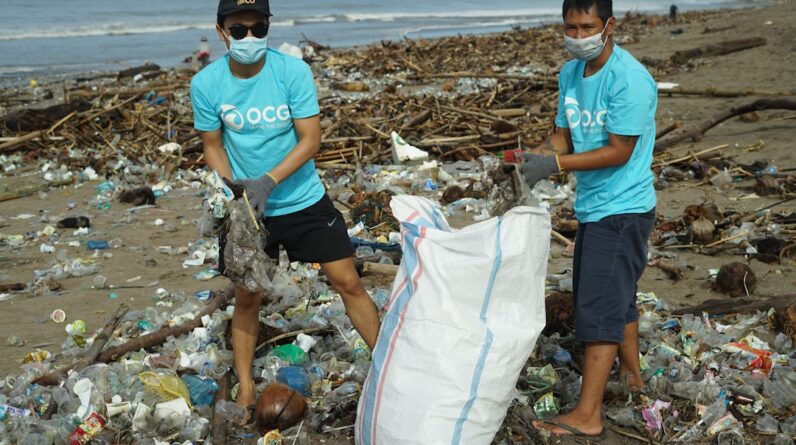
When you think of the ocean, images of vast blue waters and sandy beaches may come to mind. However, beneath the surface lies a world teeming with life, including a remarkable group of organisms known as seaweeds. These marine plants, often overlooked, play a crucial role in the health of our oceans and the planet as a whole.
Seaweed is not just a culinary delight found in sushi or a garnish for your favorite dish; it is a powerhouse of ecological benefits that can help combat some of the most pressing environmental challenges we face today. Seaweed, or macroalgae, comes in various shapes, sizes, and colors, ranging from the familiar green and brown varieties to the vibrant reds. You may be surprised to learn that there are over 10,000 species of seaweed, each contributing uniquely to marine ecosystems.
They thrive in diverse environments, from rocky shorelines to deep ocean waters, and serve as vital habitats for countless marine creatures. As you delve deeper into the world of seaweed, you will discover its multifaceted roles in promoting biodiversity, supporting fisheries, and even addressing climate change.
Key Takeaways
- Seaweed is a type of marine algae that plays a crucial role in marine ecosystems and has a wide range of applications.
- Seaweed has the natural ability to absorb and remove pollutants from the ocean, making it an effective pollution fighter.
- Seaweed can absorb toxins such as heavy metals and chemicals, helping to improve water quality and protect marine life.
- Seaweed plays a significant role in carbon sequestration, helping to mitigate the effects of climate change by absorbing and storing carbon dioxide.
- Seaweed shows promise as a sustainable alternative to plastic, with the potential to reduce plastic pollution in the ocean.
Seaweed as a Natural Pollution Fighter
As you explore the environmental challenges facing our oceans, you may find yourself increasingly concerned about pollution. From plastic waste to nutrient runoff, the threats to marine ecosystems are numerous and complex. However, seaweed emerges as a natural ally in the fight against pollution.
Its unique biological properties allow it to absorb excess nutrients and pollutants from the water, effectively acting as a natural filter for our oceans. When you consider the impact of agricultural runoff, which often leads to harmful algal blooms and dead zones in coastal waters, the role of seaweed becomes even more significant. By absorbing nitrogen and phosphorus from the water column, seaweed helps mitigate these harmful effects.
This not only improves water quality but also supports the overall health of marine ecosystems. As you witness the resilience of seaweed in action, you may feel inspired by its potential to restore balance to our oceans.
Seaweed’s Ability to Absorb Toxins

In addition to its nutrient-absorbing capabilities, seaweed possesses an impressive ability to absorb toxins from its environment. Heavy metals and other harmful substances can accumulate in marine ecosystems, posing risks to both wildlife and human health. As you learn more about this fascinating organism, you will discover that certain species of seaweed can effectively sequester these toxins, reducing their concentration in the water.
This remarkable ability is not just beneficial for marine life; it also has implications for human health. By filtering out harmful substances from the water, seaweed contributes to cleaner oceans and safer seafood. As you consider the interconnectedness of marine ecosystems and human well-being, you may begin to appreciate the vital role that seaweed plays in maintaining a healthy environment for all living beings.
Seaweed’s Role in Carbon Sequestration
As climate change continues to pose a significant threat to our planet, the search for effective carbon sequestration methods has become increasingly urgent. You may be surprised to learn that seaweed can play a pivotal role in this process. Through photosynthesis, seaweed absorbs carbon dioxide from the atmosphere and converts it into organic matter.
This not only helps reduce greenhouse gas concentrations but also contributes to the overall health of marine ecosystems. When you think about carbon sequestration, you might typically envision forests or terrestrial plants. However, seaweed forests—often referred to as kelp forests—are equally important in capturing carbon.
These underwater ecosystems can sequester large amounts of carbon over their relatively short life cycles. As you explore the potential of seaweed in combating climate change, you may find hope in its ability to contribute to a more sustainable future.
Seaweed as a Sustainable Alternative to Plastic
In recent years, the global plastic crisis has garnered significant attention, with millions of tons of plastic waste polluting our oceans each year. As you consider solutions to this pressing issue, seaweed emerges as a promising alternative to traditional plastics. Biodegradable and versatile, seaweed-based materials can be used to create packaging, utensils, and even textiles that reduce our reliance on fossil fuel-derived plastics.
The beauty of using seaweed as a sustainable alternative lies in its renewability and minimal environmental impact. Unlike conventional plastic production, which requires extensive resources and contributes to pollution, seaweed can be cultivated with little input and has a much smaller carbon footprint. As you reflect on your own consumption habits and their impact on the environment, you may feel empowered by the potential of seaweed-based products to create a cleaner and more sustainable world.
Seaweed’s Potential in Wastewater Treatment

As urbanization continues to rise, so does the challenge of managing wastewater effectively. Traditional treatment methods can be costly and energy-intensive, leading many to seek innovative solutions. Here again, seaweed proves its worth as a natural ally in wastewater treatment processes.
Its ability to absorb nutrients and pollutants makes it an ideal candidate for bioremediation efforts. When integrated into wastewater treatment systems, seaweed can help remove excess nitrogen and phosphorus while simultaneously producing biomass that can be harvested for various applications. This dual benefit not only improves water quality but also creates opportunities for sustainable resource use.
As you consider the future of wastewater management, you may find inspiration in the potential of seaweed to transform how we approach this critical issue.
The Importance of Seaweed Conservation
While the benefits of seaweed are numerous, it is essential to recognize that these valuable organisms face threats from climate change, pollution, and overharvesting. As you learn about the importance of conserving seaweed habitats, you may feel compelled to advocate for their protection. Healthy seaweed populations are vital for maintaining biodiversity and supporting marine ecosystems.
Conservation efforts can take many forms, from establishing marine protected areas to promoting sustainable harvesting practices. By supporting initiatives that prioritize seaweed conservation, you contribute to the preservation of these essential organisms for future generations. As you reflect on your role in protecting our oceans, consider how your actions can help ensure that seaweed continues to thrive and provide its myriad benefits.
Harnessing the Power of Seaweed for a Cleaner Ocean
In conclusion, as you explore the multifaceted world of seaweed, it becomes clear that these remarkable organisms hold immense potential for addressing some of our most pressing environmental challenges. From fighting pollution and absorbing toxins to sequestering carbon and providing sustainable alternatives to plastic, seaweed is a powerful ally in our quest for a cleaner ocean. As you consider your own relationship with the ocean and its ecosystems, remember that every small action counts.
Whether it’s supporting sustainable seafood practices or advocating for conservation efforts, your choices can contribute to a healthier planet. By harnessing the power of seaweed and recognizing its importance in maintaining ecological balance, we can work together toward a brighter future for our oceans and all who depend on them.
In a related article on Live Life with a Cause, the importance of stopping forest burning to save trees and animals is highlighted. Forests play a crucial role in maintaining biodiversity and acting as a reservoir for various species. By preventing forest fires, we can protect the habitats of countless animals and preserve the natural balance of ecosystems. To learn more about this important cause, visit Stop Forest Burning: Save Trees and Animals.
FAQs
What is seaweed and why is it important?
Seaweed is a type of marine algae that grows in the ocean. It is important because it plays a crucial role in marine ecosystems, providing food and habitat for many marine organisms.
How can seaweed help fight ocean pollution?
Seaweed has the ability to absorb and remove pollutants from the water, including heavy metals and excess nutrients. This can help improve water quality and reduce the impact of pollution on marine life.
What are some specific ways seaweed can be used to combat ocean pollution?
Seaweed can be used in bioremediation projects to clean up contaminated water and sediment. It can also be used in wastewater treatment systems to remove pollutants before they are discharged into the ocean.
Are there any other benefits of using seaweed to fight ocean pollution?
In addition to its pollution-fighting abilities, seaweed can also be used to create sustainable products such as biofuels, bioplastics, and fertilizers, reducing the reliance on non-renewable resources.
Is seaweed harvesting sustainable?
When harvested responsibly, seaweed can be a sustainable resource. However, overharvesting can have negative impacts on marine ecosystems, so it is important to manage seaweed harvesting practices carefully.





